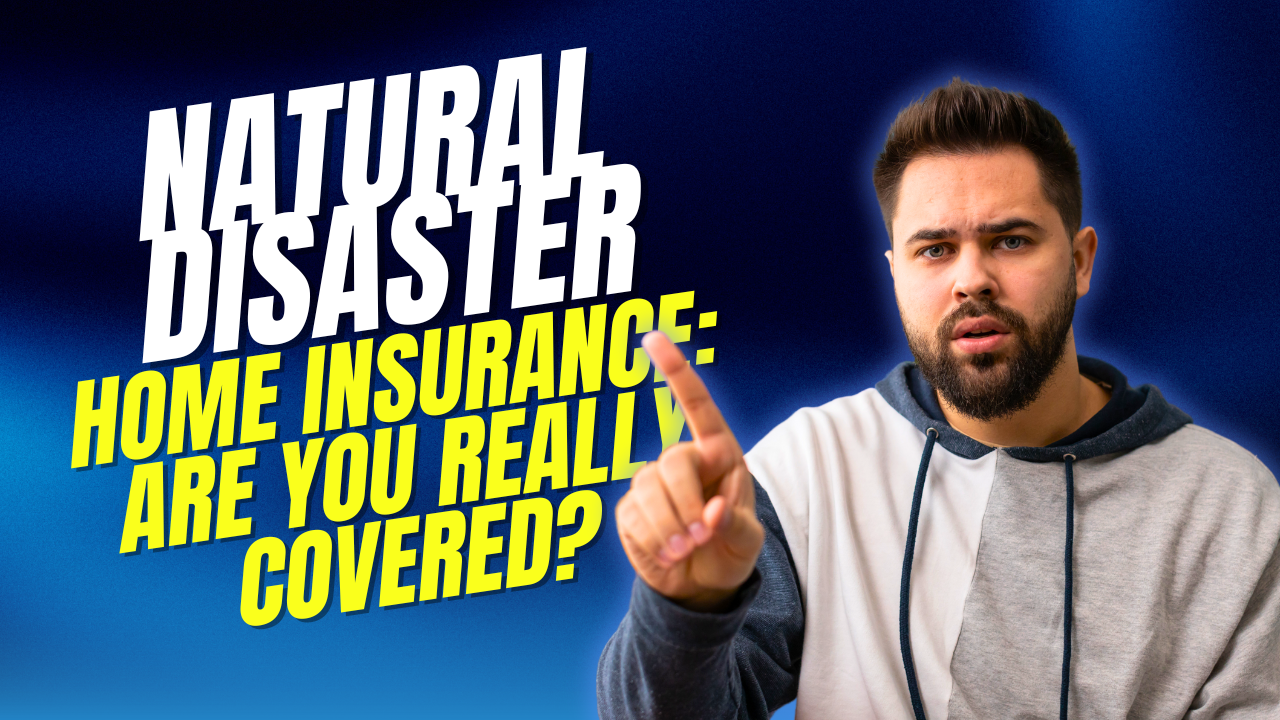Introduction
Natural disasters can hit without warning—damaging homes, uprooting lives, and leaving financial devastation in their wake. From wildfires and hurricanes to floods and earthquakes, the aftermath can be costly. That’s where home insurance steps in, but does it cover everything?
Understanding your natural disaster home insurance coverage is essential to avoid surprise expenses. This guide breaks down what’s typically included, what isn’t, and the extra steps you can take to fully protect your home and peace of mind.
What Is Home Insurance and What Does It Cover?
Homeowners insurance provides financial protection against damage to your property and belongings. A standard policy usually includes:
-
Dwelling Coverage: Protects the physical structure of your home.
-
Other Structures Coverage: Covers garages, fences, sheds, and similar structures.
-
Personal Property Coverage: Replaces belongings like furniture, electronics, and clothing.
-
Liability Protection: Covers legal or medical costs if someone is injured on your property.
-
Loss of Use Coverage: Pays for living expenses if your home becomes uninhabitable.
However, when it comes to natural disasters, standard coverage doesn’t always go far enough.
Natural Disasters and Standard Home Insurance: What’s Covered?
Below is a breakdown of common natural disasters and how they’re handled by typical insurance policies:
Hurricanes
-
Covered: Yes—wind damage is typically included.
-
Not Covered: Flooding caused by hurricanes is excluded.
-
Tip: In coastal areas, you may have a separate hurricane deductible, usually based on a percentage of your home’s value.
Floods
-
Covered: No—flooding is not part of standard coverage.
-
Solution: Buy flood insurance through the National Flood Insurance Program (NFIP) or a private provider.
-
Fact: Just one inch of floodwater can cause over $25,000 in damage.
Earthquakes
-
Covered: No—excluded from standard policies.
-
Solution: Purchase earthquake insurance as an add-on or separate policy.
-
Note: These policies often come with high deductibles.
Wildfires
-
Covered: Yes—most home insurance policies include fire damage.
-
Recommendation: Ensure your coverage limits are high enough to rebuild in wildfire-prone areas.
Tornadoes
-
Covered: Yes—wind damage from tornadoes is generally covered.
-
Watch Out For: Some policies include high wind deductibles, especially in tornado-prone zones.
Hailstorms
-
Covered: Yes—hail damage is commonly covered.
-
Caution: Some insurers exclude cosmetic damage, especially to roofs.
Landslides and Mudslides
-
Covered: No—these are considered earth movement and are not included.
-
Solution: Look into surplus lines insurers for a separate policy.
Key Elements to Review in Your Policy
Before disaster strikes, review these essential components of your home insurance:
Coverage Limits
Make sure your dwelling and personal property limits reflect current rebuilding and replacement costs.
Deductibles
Know both your standard and disaster-specific deductibles. Hurricane and windstorm deductibles often differ from your regular deductible.
Exclusions
Carefully review what isn’t covered, especially if you live in high-risk areas.
Endorsements and Riders
Ask your insurer about additional coverage options for disasters like earthquakes or floods.
Essential Supplemental Insurance Options
To close gaps in your standard coverage, consider these add-ons:
-
Flood Insurance: Required in high-risk zones and available through NFIP or private insurers.
-
Earthquake Insurance: Essential for residents in seismic zones.
-
Sewer Backup Coverage: Helpful during storms that overwhelm sewage systems.
-
Ordinance or Law Coverage: Pays for upgrades needed to meet current building codes after damage.
How to Prepare: Steps for Full Protection
Create a Home Inventory
-
Take photos or videos of all belongings.
-
Keep receipts or appraisals for expensive items.
-
Store the list securely, either online or offsite.
Review Your Policy Annually
-
Update it after renovations or major purchases.
-
Adjust for inflation and rising construction costs.
Know Your Risk Zone
-
Use FEMA maps and local zoning tools to determine if you’re in a floodplain, fire zone, or seismic area.
Work with a Trusted Insurance Agent
An experienced agent can help spot coverage gaps and recommend the best protection for your area.
What to Do After a Natural Disaster: Filing a Claim
If disaster strikes, follow these steps to maximize your insurance benefits:
-
Ensure Safety First: Evacuate if necessary and return only when it’s safe.
-
Contact Your Insurer Promptly: Report the damage as soon as possible.
-
Document Everything: Take detailed photos and videos of the destruction.
-
Prevent Further Damage: Make temporary repairs and keep receipts for reimbursement.
-
Meet with the Adjuster: Provide full documentation and cooperate during the inspection.
-
Track All Expenses: Save receipts for repairs, temporary housing, and food.
How to Lower Premiums Without Sacrificing Coverage
You can reduce your home insurance costs while staying protected by:
-
Installing smoke detectors, security systems, and deadbolts
-
Reinforcing your roof and windows in storm-prone regions
-
Elevating utilities above flood levels
-
Bundling home and auto insurance for a discount
-
Increasing your deductible—if financially manageable
The Growing Role of Climate Change in Home Insurance
Climate change is making natural disasters more frequent and severe, which directly impacts your home insurance:
-
Higher Premiums: Insurers adjust rates based on rising risks.
-
Coverage Restrictions: Some companies pull out of high-risk areas altogether.
-
Tougher Inspections: More scrutiny before issuing or renewing policies.
Takeaway: Be proactive in reviewing your policy and securing adequate coverage before disaster strikes.
Conclusion
Having home insurance is essential—but having the right kind of coverage for natural disasters is even more critical. A standard policy may not protect you from floods, earthquakes, or landslides. By reviewing your policy carefully, adding supplemental coverage where needed, and working with a qualified agent, you can ensure your home and financial future are well protected.
Don’t wait until it’s too late. Review your policy today and close any gaps to gain peace of mind before the next natural disaster hits.
